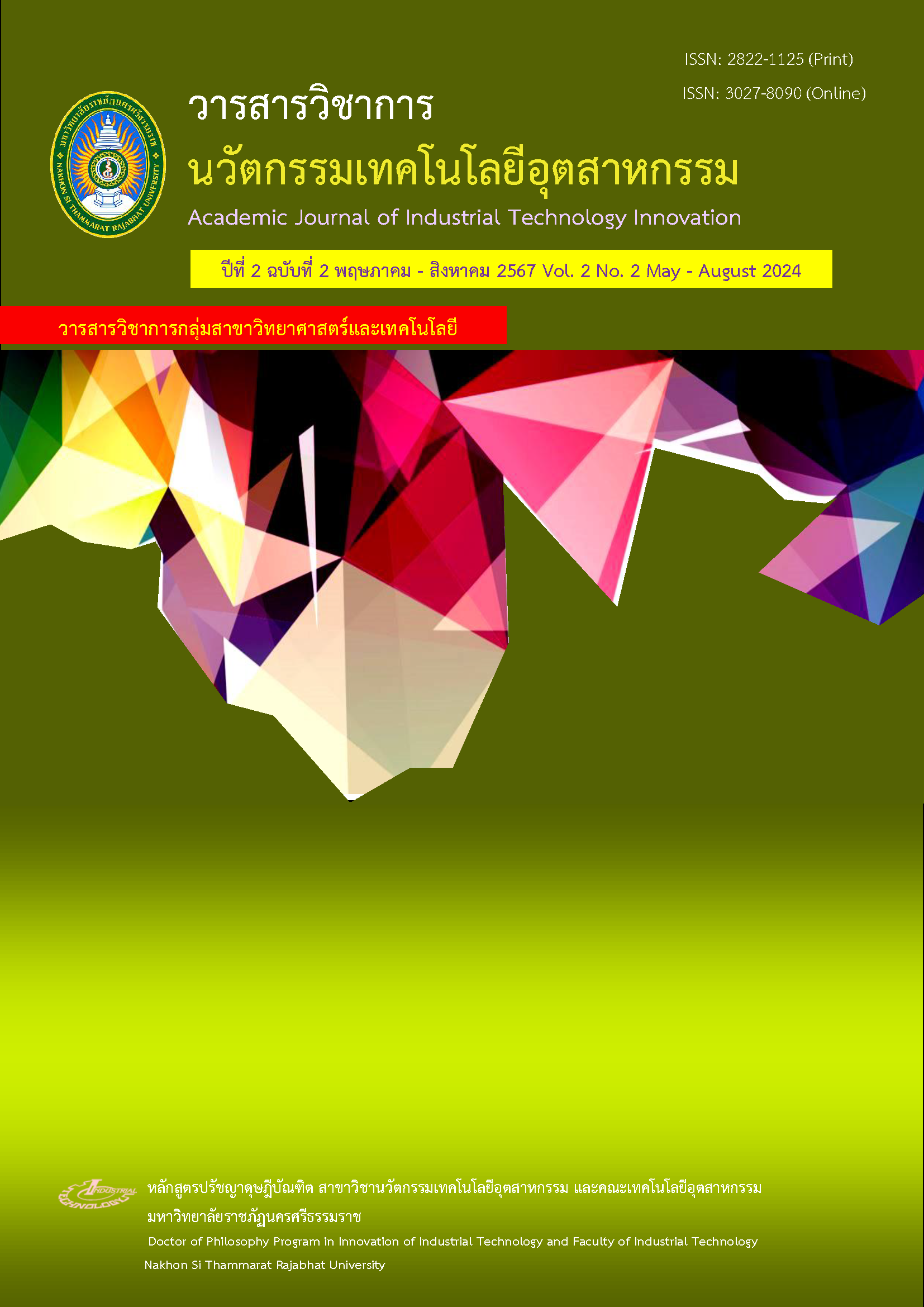A Study of Corrosion-Erosion Behavior of Low and High Carbon Steels in Acid and Sand Environments Using Taguchi's Experimental Design
Main Article Content
Abstract
This research aims to investigate and compare the corrosion-erosion behavior of low carbon steel (AISI 1018) and high carbon steel (AISI 1060) under different environmental conditions. A Taguchi experimental design was employed to efficiently evaluate the effects of rotational speed (1,800, 3,600, and 5,400 RPM) and three environmental conditions: distilled water with sand, sulfuric acid solution at pH 4, and sulfuric acid solution at pH 4 with sand on weight loss. An L9 orthogonal array and a rotating cylinder electrode (RCE) setup were utilized for the experiments. Both steel types exhibited good corrosion-erosion resistance, particularly in the sulfuric acid solution at pH 4 without sand. Signal-to-noise ratio (S/N) analysis indicated slightly better performance for high carbon steel (S/N = 53.9) compared to low carbon steel (S/N = 52.4). These findings can be applied to select suitable materials for applications demanding resistance to diverse environments, especially those with high acidity. The application of Taguchi methodology facilitated efficient experimental planning and analysis, enabling informed material selection.
Article Details

This work is licensed under a Creative Commons Attribution-NonCommercial-NoDerivatives 4.0 International License.
Articles published in this journal are copyrighted by the Faculty of Industrial Technology. Nakhon Si Thammarat Rajabhat University
In addition, research results and academic works published in the journal It is the independent opinion of the author. The author is responsible for any legal consequences that may arise from the published article. The editorial team and the journal's production team, we don't always have to agree.
References
Huang, Y. et al. 2021. “Optimization of weld strength for laser welding of steel to PMMA using Taguchi design method,” Optics & Laser Technology. 136(1): pp. 1–11.
Minh, P. S., Dang, H.-S., and Ha, N. C. 2023. “Optimization of 3D cooling channels in plastic injection molds by Taguchi-integrated principal component analysis (PCA),” Polymers. 15(5): pp. 1–23.
Aman, A., Bhardwaj, R., Gahlot, P., and Phanden, R. K. 2023. “Selection of cutting tool for desired surface finish in milling Machine using Taguchi optimization methodology,” Materialstoday: Proceedings. 78: pp. 444–448.
Doubi, Y. et al. 2022. “Optimization with Taguchi Approach to Prepare Pure TiO2 Thin Films for Future Gas Sensor Application,” J. Electron. Mater. 51(7): pp. 3671–3683.
Lv, B. and Cai, J. 2023. “Simulation and analysis of geometric parameters based on Taguchi method in YY microfluidic device for circulating tumor cell separation by alternating current dielectrophoretic,” Journal of Chromatography. A1693: pp. 463894.
Mansour, N. M., El-Sherbiny, D. T., Ibrahim, F. A., and El-Subbagh, H. I. 2022. “Taguchi Approach for Optimization of a Green Quantitative 1H-NMR Practice for Characterization of Levetiracetam and Brivaracetam in Pharmaceuticals,” Journal of AOAC International. 105(6): pp. 1516–1527.
Romdhane, I. B., Jemmali, A., Kaziz, S., Echouchene, F., Alshahrani, T., and Belmabrouk, H. 2023. “Taguchi method: artificial neural network approach for the optimization of high-efficiency microfluidic biosensor for COVID-19,” The European Physical Journal Plus. 138(4): pp. 138–359.
Asmara, Y. P., Raman, J. G., Suparjo, Herlina, F., and Wei, Y. C. 2024. “Empirical Study of the Effect of Nano coolant Particles on Corrosion Rate of 316 Stainless Steel,” International Journal of Corrosion. 2024: pp. 1–8.
Evans, K. J., Vera, J., and Mendez, C. 2024. “Effect of Dissolved Oxygen on Carbon Steel Corrosion and Particulate Formation. Part 1: Rotating Cylinder Electrode Experiments,” in Proceedings of the AMPP Annual Conference + Expo. 3-7 March 2024. New Orleans, U.S. state of Louisiana, pp. C2024-20718.
Musabikha, S. et al. 2024. “The effects of flow rate on impedance measurements of marine coatings using a rotating cylinder electrode,” J Coat Technol Res. pp. 1–12.
Wood, R. J. and Cook, A. D., 2022. “Erosion-Corrosion in Pipe Flows of Particle-Laden Liquids,” in Advances in Slurry Technology, Intech Open. [Online]. Available: https://www.intechopen.com/chapters/83676. Accessed: 12 July 2024.
Eduok, U. and Szpunar, J. 2020. “Corrosion Inhibitors for Sweet Oilfield Environment (CO 2 Corrosion),” in Corrosion Inhibitors in the Oil and Gas Industry. 1st ed., V. S. Saji and S. A. Umoren, Eds. Wiley, pp. 177–227.
He, D. D., Jiang, X. X., Li, S. Z., and Guan, H. R. 2005. “Erosion-corrosion of stainless steels in aqueous slurries-a quantitative estimation of synergistic effects,” Corrosion. 61(1): pp. 30–36.
Matsumura, M. 1994. “Erosion-Corrosion of Metallic Materials in Slurries,” Corrosion Reviews. 12(3–4): pp. 321–340.
Yelamasetti, B., G, V. R., Manikyam, S., and Saxena, K. K. 2022. “Multi-response Taguchi grey relational analysis of mechanical properties and weld bead dimensions of dissimilar joint of AA6082 and AA7075,” Advances in Materials and Processing Technologies. 8(sup3): pp. 1474–1484.
Caputo, A. C., Federici, A., Pelagagge, P. M., and Salini, P. 2022. “On the design of shell-and-tube heat exchangers under uncertain operating conditions,” Applied Thermal Engineering. 212: pp.118541: 1–18.
Hussain, Z. 2021. “Comparative Study on Improving the Ball Mill Process Parameters Influencing on the Synthesis of Ultrafine Silica Sand: A Taguchi Coupled Optimization Technique,” Int. J. Precis. Eng. Manuf. 22(4): pp. 679–688.
da Silva, C. A., Pereira, H. B., Taqueda, M. E. S., and Panossian, Z. 2021. “Prediction models for multiphase-flow-induced corrosion of API X80 steel in CO2/H2S environment,” Materials and Corrosion. 72(11): pp. 1796–1807.


